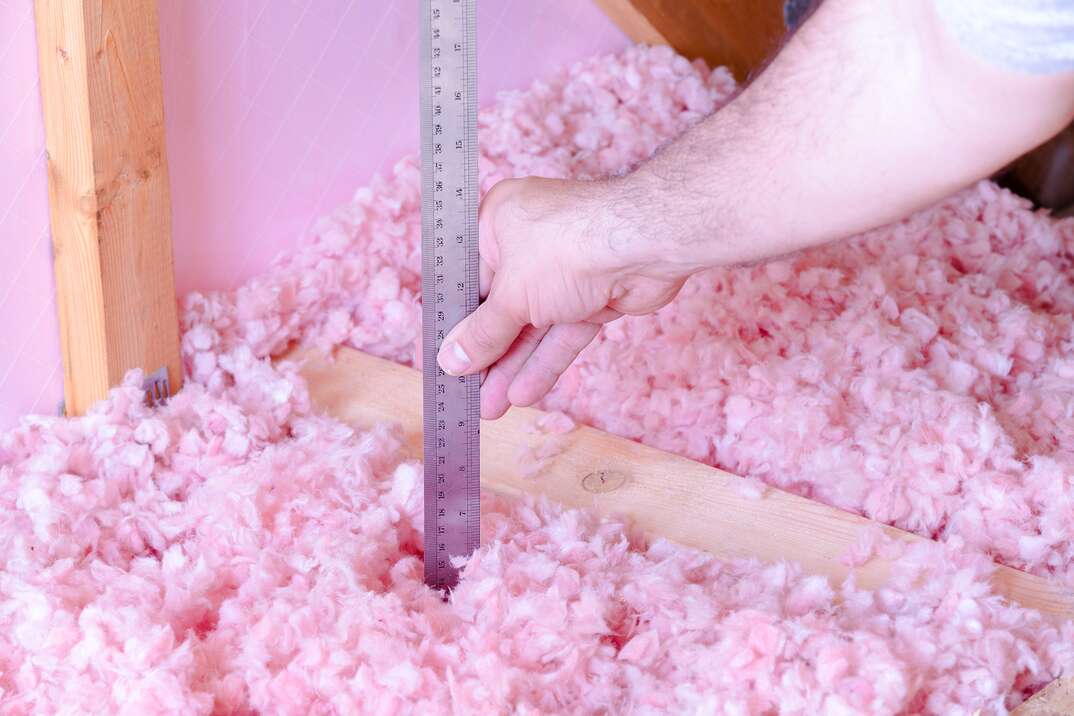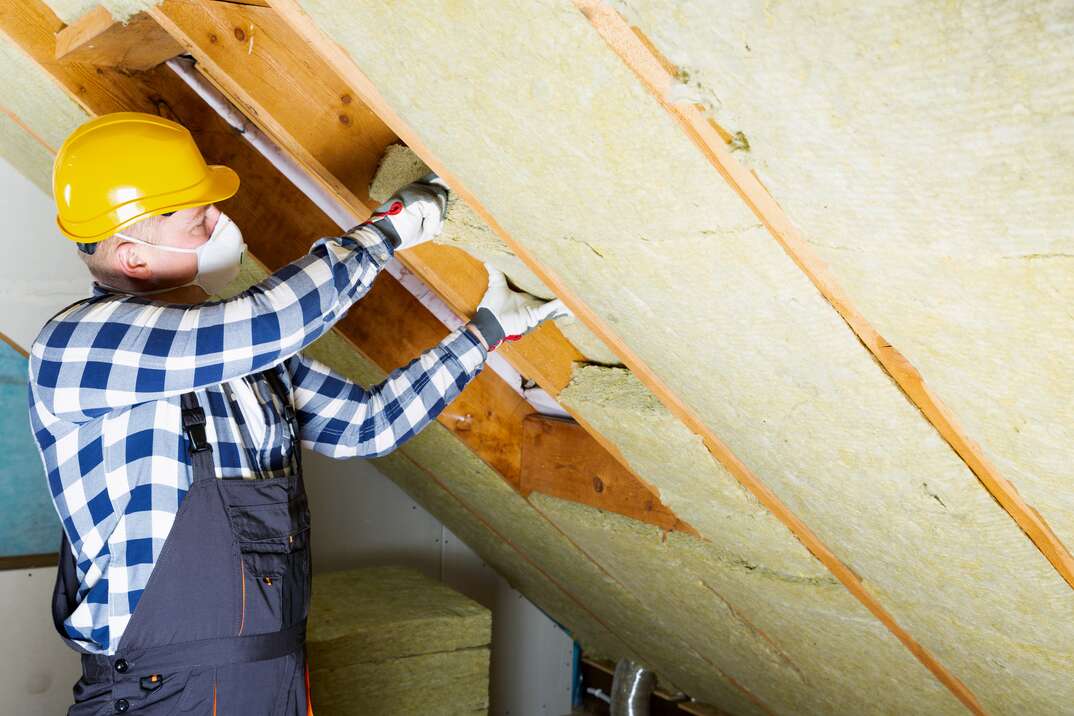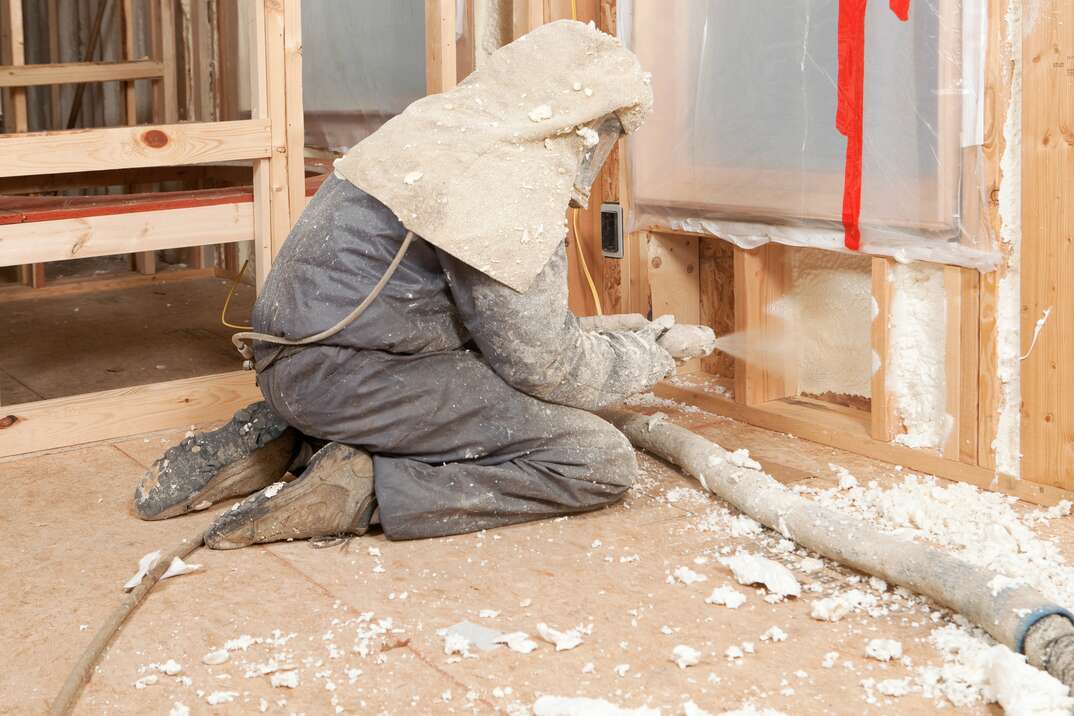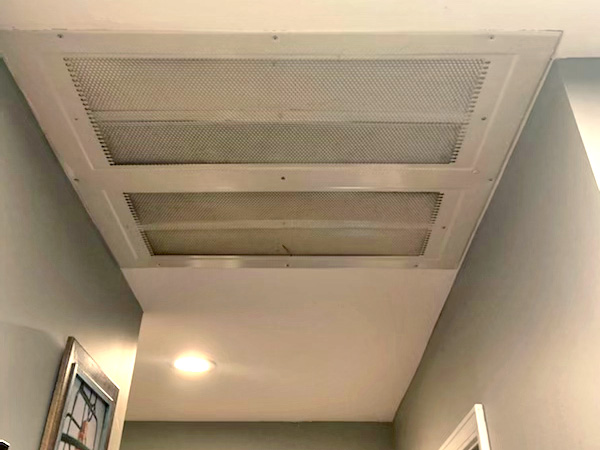How Much Does Attic Insulation Cost?

Attic Insulation Costs at a Glance
- Total cost: $1,700-$2,100
- Price per foot: $1.50-$3.50
- Professional installation per hour: $70
- Professional installation per foot: $1.50-$3.50
- Electrician services (if needed): $80 an hour
- Loose-fill insulation, total cost: $1,796
- Spray-foam insulation, total cost: $2,208
- Batt insulation, total cost: $2,091
- Removal of old insulation: $1-$2 per foot
As a homeowner, you should always be on the lookout for ways you can boost the value of your home and save yourself money in the process. Attic insulation is a great way to save you money on your utility bills and keep your home comfortable.
This May Also Interest You: 5 Insulation Tips to Save Energy and Money
Read on to learn all about the different types of insulation, how much you can expect to pay and how you can install it yourself.
What Is Insulation?
Many homeowners have insulation in their attics and aren’t even aware of what it’s made of or what it does. Insulation is material designed to prevent heat or sound from being transmitted from one area to another. It's normally used to keep heat and/or sound in or out of your home, or to confine it to certain parts of your house.
The reason why it’s so common to see insulation in attics is due to the fact that warm and cool air often flows through the attic. Left unchecked, this air can freely make its way through your home. While this may not seem like a big deal at first, it can lead to warm homes in the summertime and cold homes in the wintertime. This means your air conditioning unit will have to work overtime to keep your home comfortable, causing a spike in your utility bills.
Why Install Insulation in Your Attic
You may be looking at the price of attic insulation while thinking “Why would I ever want to pay for this?” While this is a common question asked by homeowners - the price of insulation pales in comparison to the price of your energy bill in a home without insulation. To better understand why insulation is so important and why it helps save homeowners money, you must first understand how heat flows throughout your home. Heat makes its way through your home in three different ways:
- Conduction: Heat moves through materials
- Convection: Heat circulates through liquids and gases
- Radiation: Heat travels in a straight line and heats anything solid in its path
Most common insulation materials work by slowing conductive heat flow. Regardless of the mechanism, heat flows from warmer to cooler until there is no longer a temperature difference.
To maintain comfort, the heat lost in the winter must be replaced by your heating system and the heat gained in the summer must be removed by your cooling system. Properly insulating your home will decrease this heat flow by providing an effective resistance to the flow of heat.

Costs of Insulating Your Attic
There are several key factors that will determine how much you can expect to pay for insulation installation. First and foremost, are you replacing old insulation or are you installing completely new insulation? If you are replacing old insulation — which is the case for most homeowners — you will need to assess your current situation.
Wet or damp insulation and mold or rotted rafters may be indicative of moisture problems, potentially stemming from a roof leak, which should be addressed before installing insulation. This will require you to re-seal your attic.
After assessing your current situation, you will then need to decide what type of insulation best fits the need of your home. There are several different types of insulation, each coming with their own individual pros and cons. We will go into further detail about the different types of insulation later in the article. Understanding the key factors that go into insulation costs will help you properly set your budget.
Attic Insulation Cost Estimates
The price of attic insulation can vary greatly depending on the size of your attic, the material, and your location. This makes it difficult to pinpoint an average cost for homeowners across the country. With that being said, we can estimate that it can cost anywhere from $1,700 to $2,100 or between $1.50 and $3.50 per foot to insulate an attic.
Depending on the difficulty of your job, the size of your attic, and the type of insulation material used, the final cost for professional placement will likely fall between $1.50 and $3.50 per foot. You will also need to consider the labor cost that comes with installation as well as any replacement service fees or repairs that come with replacements. Because of the cost of labor, many homeowners choose to install their attic insulation themselves.
How Much Insulation Do I Need?
Believe it or not, 90% of homes in the United States are considered under-insulated, not giving homes the protection they need. You can find out whether or not your attic is under-insulated by getting an inspection on your attic. The proper amount of insulation needed in your attic will vary depending on two key factors:
- Where you live — Different climates will require different insulation R-values. R-values range from 2.0 to 8.0 per inch of insulation, the higher the value the better job the insulation does. The more extreme the climate the higher the R-value needs to be
- Your home’s age — The older your home the more insulation you will need. You can retrofit your home with fiberglass and mineral wool insulation if needed
The type of insulation material will also play a big role in your insulation’s R-value. Also, the size of your attic will play a large role in the amount of insulation you need. If you are unsure, consult with an expert and they will help. The last thing you want to do is spend far too much money or not get enough and have to make multiple trips to the store.
Attic Space Insulation Costs by Square Feet
As mentioned earlier in the article, you can expect to pay anywhere between $1.50 and $3.50 per square foot for insulation. What about labor costs? You can expect to pay an attic insulation installer about $70 per hour. In some cases, you may also need the expertise of an electrician to safely insulate around junction boxes or cables; expect to pay an additional $85 per hour for this service.
Depending on the difficulty of your job, the size of your attic, and the type of insulation material you decide to use, the final cost for professional placement will likely fall between $1.50 and $3.50 per foot. There are some rebates and savings you can benefit from when installing insulation as well. Some states still offer weatherization rebates and discounts and other incentives for insulating your home.
Types of Insulation and Material Costs
There are three major types of insulation, each providing their own benefits and each coming at different prices. It’s important to understand the differences between these different materials to ensure you make the correct decision. The three different types of insulation materials and their prices are described below:
Blown-In Insulation
Loose-fill (blown-in) insulation is sold in large bags containing tiny chunks of cellulose, fiberglass, or mineral wool fiber, which a professional installer will use a blowing machine to install. This is the ideal solution if you’re looking to fill small, empty areas, and gaps. You can even purchase a bag that covers up to 40 square feet for less than $12.
Experts recommend using this option in attics with irregular framing or obstructions between joists and older attics that already have some insulation and are simply in need of a touch-up. The average cost of installing loose-fill insulation in your attic is $1,796.

Spray Foam Insulation
Spray foam insulation is the most expensive insulation, and it is available in open cell and closed cell options. The open cell option is the less expensive option, but it does not provide any vapor berries. The closed-cell option may be more expensive, but it is denser and provides a strong barrier against air and water. While this option may be expensive, it’s perhaps the highest-quality material available.
This is the recommended option for those looking for insulation against noise, new construction, and outdoor applications. In fact, this product is most easily installed in newly constructed homes. The average cost for spray foam insulation installation costs $2,208.
Batt Insulation
Batt insulation consists of long rolls of insulation fibers, which are held together with a paper or reflective foil backing. The insulation fibers may be fiberglass, cellulose, mineral wool, or even recycled blue jeans. This type is great for covering a wide area but it’s difficult to install in tight places and small gaps.
This is the recommended option for attics with a standard spacing of joists and new construction free of obstructions or existing insulation. The average cost of batt insulation installation for homeowners in the United States is $2,091.
Removing and Replacing Existing Insulation Costs
Luckily for homeowners, experts suggest that it’s highly unlikely that you will need to completely remove and replace your insulation. In fact, most experts strongly recommend against completely removing and replacing your insulation unless it’s absolutely necessary. Unless your insulation has mold or animal feces you should weigh your options before committing to completely removing and replacing insulation.
The estimated cost of removing old insulation is $1 to $2 per square foot. Keep in mind, this is on top of the price of installing your new insulation. You can remove your insulation yourself but if there are signs of mold it’s highly recommended that you seek professional help. Mold can be dangerous and it needs to be disposed of properly to ensure you and your family are safe.
DIY Attic Insulation
Attic insulation is one of the most common DIY home renovation projects homeowners embark on. This is because it can help save you 10-50% on your energy bill and it’s one of the easiest home renovation projects. First and foremost, you need to get an accurate estimate of how much you need and what type you will need. Next, you will need to protect yourself by wearing a dust mask, avoiding standing on joists, and illuminating dark corners. Once you’re all set up and ready to go, here are the steps that you will need to follow:
- Seal any air leaks — Any gaps in the attic will let any hot or cool air escape, making any insulation you add essentially useless
- Other prep steps — Also make sure any leaks are fixed, box out any light fixtures, and direct all exhaust fans and vents to the exterior
- Loose-fill — If you’re installing loose-fill insulation, make sure the fill's depth is uniform across the attic. To help the material achieve the right density as you install it, hold the blower hose parallel to the floor and the floor joists. Blow in the fill between and over the joists rather than across them.
- Batts — Make sure that you are using unfaced backs. You can buy them unfaced or you can remove the paper or foil backing. Place a new layer of unfaced batts perpendicular to the old layer, to cover any gaps in the lower layer. Adjoining batts should be butted snugly together, but not tight enough to compress them. Don't leave any gaps between batts and joists, obstructions, or abutting batts. Even narrow ones will let air escape. Instead, cut a thin strip of the insulation you're using to size
If you are unsure as to whether or not you can complete this project on your own, don’t be afraid to seek the help of a professional insulation company. Professionals are trained and experienced in the industry and will ensure that the installation is handled properly. They can also complete the job in a few hours while it may take you a few days.
Being prepared with a home repair plan from HomeServe is a great way to avoid dealing with costly repairs. When you have a plan and a covered issue arises, simply call the 24/7 repair hotline and a local contractor will be sent to your home. See what plans from HomeServe are available in your neighborhood.


